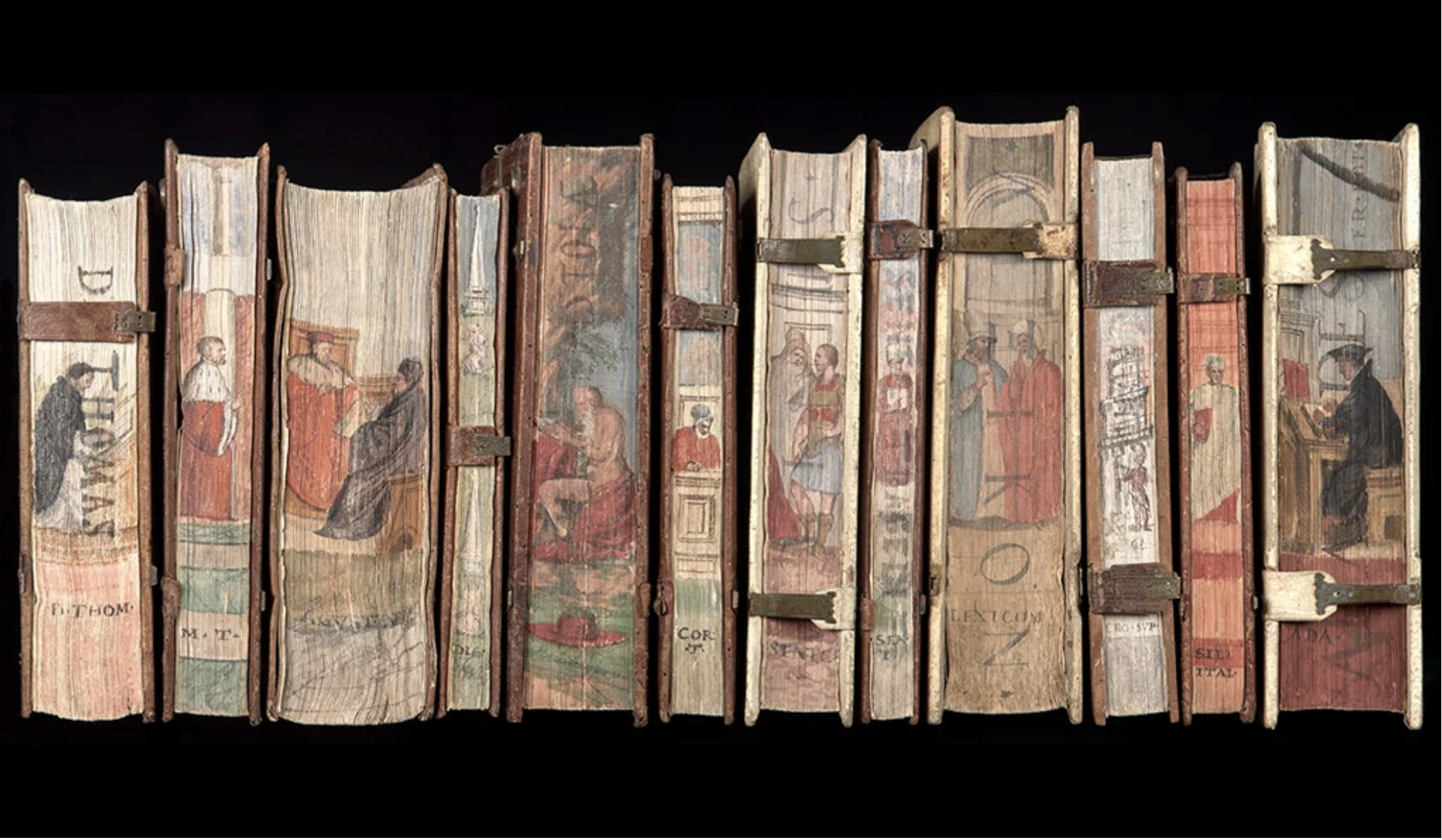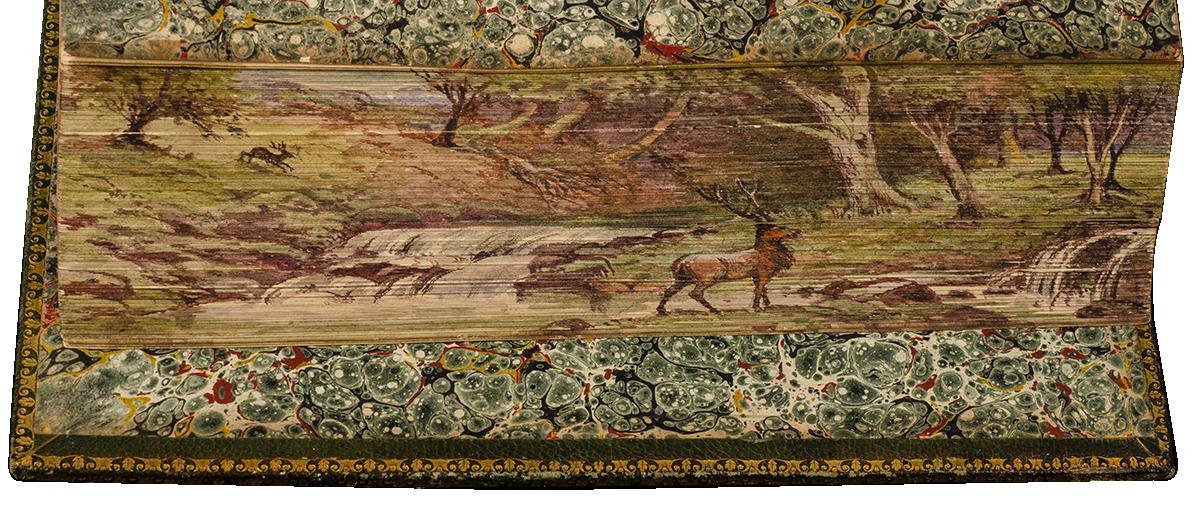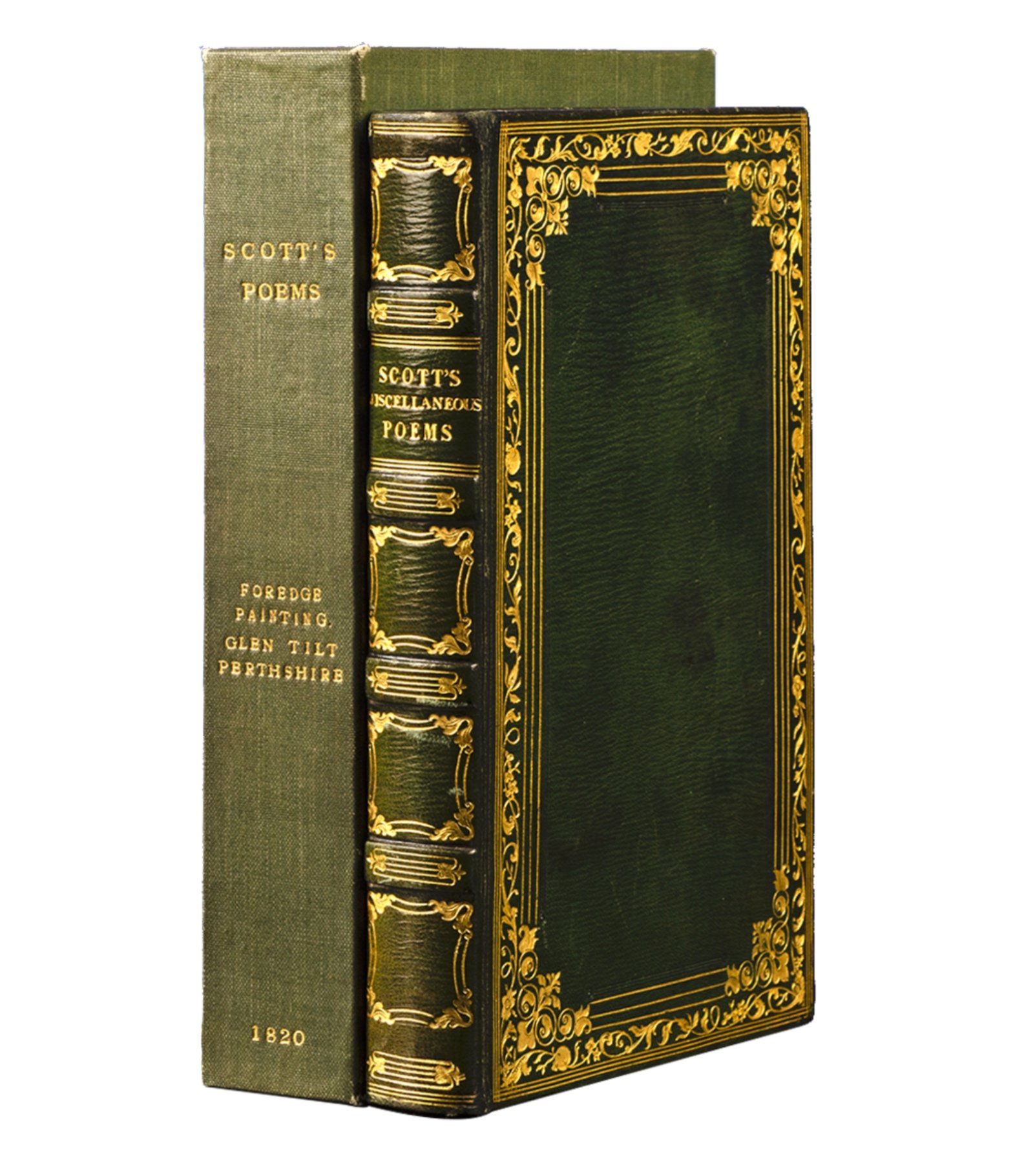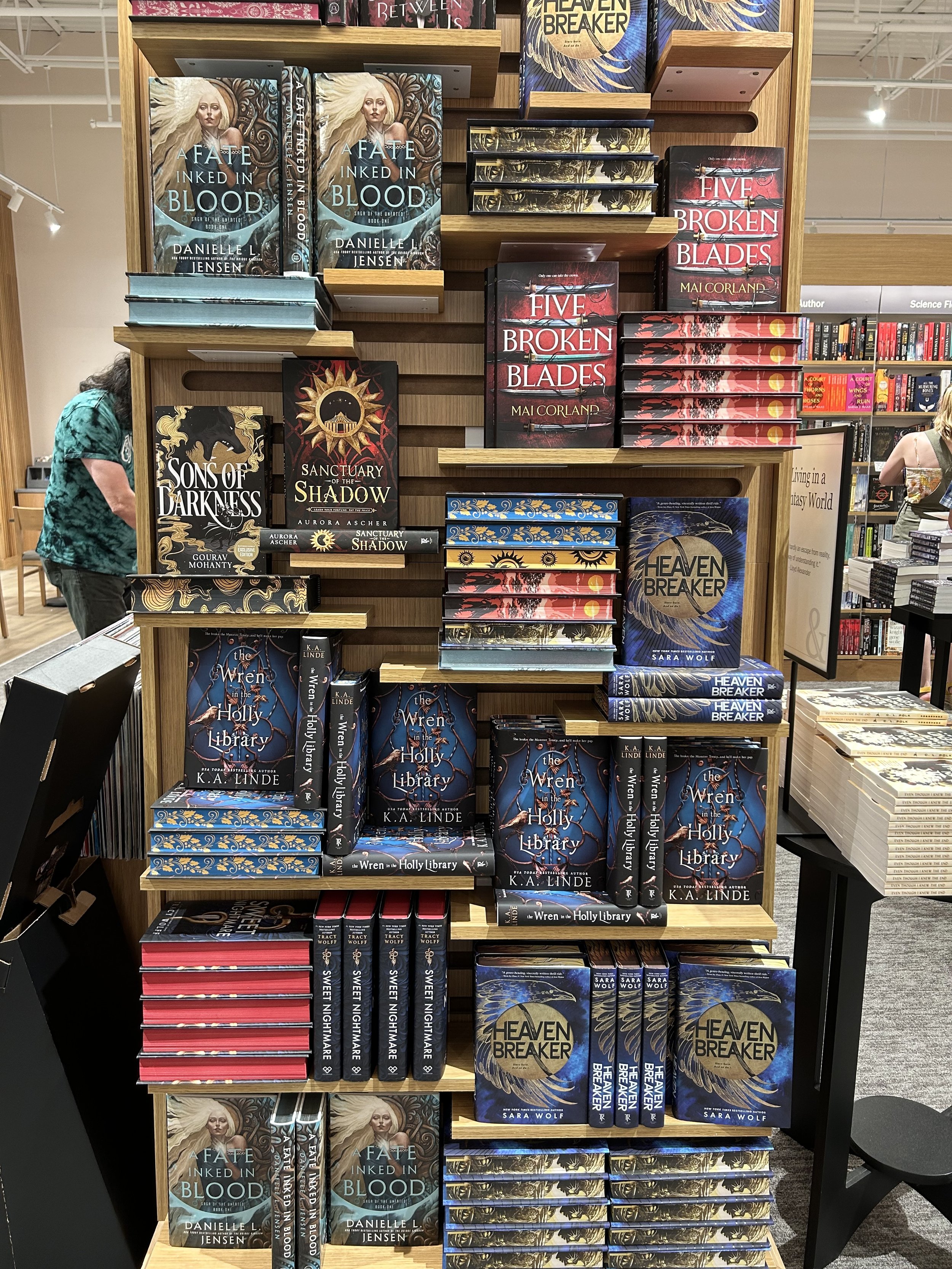The Art of Fore-Edge Painting
Detail of a hidden fore-edge painting of 'Westminster Abbey from the River Thames,’ in James Thomson’s The Seasons, 1809. Currently available at Whitmore Rare Books.
by Tara Cheesman
What was old is new again is the lesson we've all learned from TikTok, but one trend we didn't see coming is a resurgence of interest in fore-edge painting.
The fore-edge of a book is technically defined as the side of the closed text block opposite the spine. There are two main categories of Fore-Edge Painting – visible and invisible -- and several sub-categories within. A visible fore-edge painting is the simplest and most basic. When an artist paints an illustration directly onto the fore-edge, top, and/or bottom edges of the pages, it is visible to the naked eye when the book is closed. This style is currently in vogue on social media, with videos showing content creators painting their books and publishers capitalizing on the trend by releasing special editions of young adult and fantasy novels with stenciled fore-edges.
An excellent example of early visible fore-edge painting comes from the 1500s. Before titles were printed on spines, books were shelved with their fore-edges facing forward (very RH), and owners would mark the titles on the edges of the closed pages. Cesare Vecellio, an Italian artist and relative of Titian, was commissioned to paint a series of religious scenes, landscapes, and portraits on 172 books belonging to the Pillon Family Library. Twelve volumes are at Yale's Beinecke Rare Book and Manuscript Library.
The artist Cesare Vellecio painted the fore edges of these volumes in the 1580s at the behest of the Pillion family, whose estate in Belluno, Italy, housed a rich assortment of collections, including a lavish library. Vellecio, a distant cousin of Titian, decorated 172 volumes in all. From an exhibit at Yale’s Beinecke Rare Book and Manuscript Library.
Invisible or “vanishing” fore-edge painting is more complicated to produce and hence more rare. The existence of these volumes can also be more stressful for the librarian, as they are easy to miss when inventorying a collection. Unless there's a note or a catalog description tucked inside, the artistry will stay hidden from the casual (or even not-so-casual) browser. Imagine being told, "There might be a fore-edge painting or two" among a collection of older volumes knowing that the painted image becomes visible only when a book's pages are fanned at a specific angle. The artist often uses a special press, usually but not always before the leaves are bound, holding the pages in this slightly fanned position. Watercolor paint, which won't crack over time, is applied in thin layers by "drybrush" -- a technique that uses the minimum amount of water so as not to bleed into the pages. Once the painting is complete, the pages are closed and then gilded or marbleized to obscure the image further. There are several variations, including single vanishing fore-edge paintings, where the image is on only one side of the page; double, with two separate images on opposite sides; and split, double, where two separate images are visible when the book is opened in the center and lays flat.
While visible fore-edge paintings have been identified from as early as the 10th century, the earliest vanishing fore-edge painting was created for King Charles II of England by the bookbinder Thomas Mearne. He began the practice of disappearing/vanishing fore-edge painting to help track down books borrowed from the royal library, which the sovereign's friends neglected to return. This proves something I've long suspected: as long as books have existed, so too have delinquent borrowers. Like many early examples, Mearne painted coats of arms and other simple designs. More complicated paintings of landscapes and illustrations related to the text, usually of religious subjects, wouldn't appear for another hundred years in the 1750s.
As with all collectible books and art -- fore-edge painting combines the two categories -- rarity, artist skill, attribution (though signed work is rare), historical relevance, age, and condition are crucial factors in determining value. When investigating a volume for a possible invisible fore-edge painting, holding, tilting, viewing the book from different angles, fanning the pages, and looking for variations in the height of edges of the pages when the book is closed are all crucial. But the most important step is to take your time and be patient. Remember, the point was to hide the images from the casual observer.
As for contemporary examples, most are in the fantasy and young adult category. These usually feature visible fore-edge paintings or stenciling. Sets of Lord of the Rings and George R.R. Martin's Game of Thrones, in particular, seem to be a favorite among artist practitioners and collectors. I've seen some editions of The Wind in the Willows online, making me wonder why there isn't an entire market of special editions of classic children's books adorned with whimsical fore-edge paintings. It almost makes you want to start shelving your books with the spine facing in, but not quite!
Modern publishing has embraced what was once a niche specialty: These days it’s not unusual to find painted fore-edges on the Fantasy and Young Adult shelves in your neighborhood bookstore.
Tara Cheesman is a freelance book critic and a National Book Critics Circle member. Her work has appeared in The Los Angeles Review of Books, CrimeReads, Guernica, Vol. 1 Brooklyn, The Mystery Tribune and other online publications. She received her Bachelors of Fine Arts from the School of Visual Arts in New York City.





